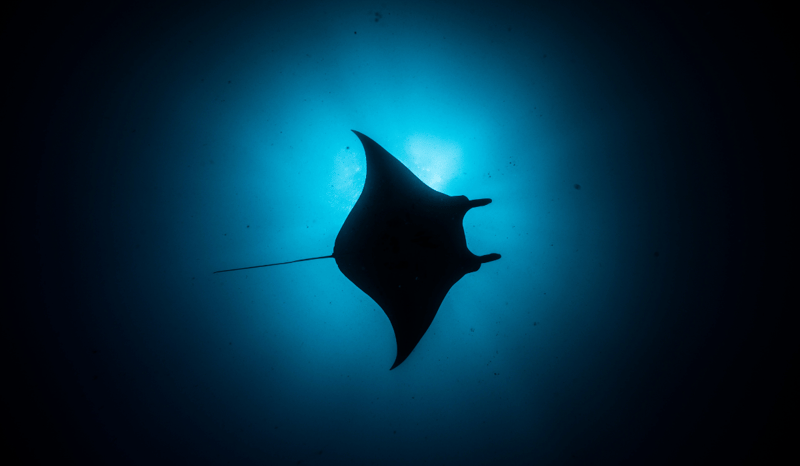
Ripped From the Ocean: How SeaWorld’s Cruelty Continues With Manta Ray Capture
Blog
SeaWorld is once again under fire after a viral video shows the capture of a protected manta ray in Florida for SeaWorld Abu Dhabi.
A disturbing video recently emerged from Florida’s Gulf Coast showing the violent capture of a giant manta ray—an endangered, protected species—by a company supplying animals to none other than SeaWorld Abu Dhabi. As the helpless ray was dragged onto a boat and dumped into what resembled a kiddie pool, onlookers watched in horror. The video sparked widespread outrage, but it also served as a painful reminder: SeaWorld’s exploitation of marine animals is far from over.
Manta Rays Are Not Props
The manta ray in the video was not hooked through the mouth, suggesting she was painfully snagged—likely with no regard for her suffering. Her powerful wings thrashed as she struggled for her life. Once hauled on board, a crew member reportedly remarked, “Oh good, that’s a female,” before placing her into a tiny onboard pool.
This wasn’t a rescue. It was an extraction—sanctioned under a Marine Special Activity License, which allows for the capture of marine life for “education,” “exhibition,” or “research.” In other words, it was completely legal to rip this wild animal from her home for a lifetime of confinement—all in the name of entertainment, under the convenient veil of conservation.
But let’s be clear: conservation doesn’t look like this.
SeaWorld’s Long History of Cruelty
SeaWorld’s involvement in this type of cruelty is no surprise. The company has a long and well-documented history of exploiting marine animals for profit, from captive breeding programs to their past capture of wild orcas—including Tilikum, who was torn from his family in the wild and spent more than 30 years in tanks, swimming endlessly in circles and chewing on metal bars out of frustration. He died in 2017, a tragic symbol of the suffering marine animals endure in captivity.
But Tilikum wasn’t SeaWorld’s only victim. The Southern Resident orca population, native to the Pacific Northwest, has been devastated by past captures—many of which were for SeaWorld. In the 1960s and ‘70s, dozens of orcas were violently taken from this critically endangered group. Many died during the process, and those who survived were shipped off to marine parks, never to see their families again.
That trauma had lasting consequences. The population has struggled to recover ever since, now teetering on the brink of extinction.
For SeaWorld to claim conservation credibility while continuing to confine and acquire wild animals is not just hypocritical—it’s harmful.
Captivity Is Not Conservation
While SeaWorld continues to market itself as a conservation organization, it simultaneously fuels the suffering of marine animals by removing them from their ocean homes and confining them to barren tanks. Despite what SeaWorld and other facilities may claim, true conservation does not include keeping animals in concrete tanks for human entertainment.
Manta rays, like orcas, dolphins, and countless other marine species, travel long distances in the wild, often hundreds of miles in a single journey. They’re intelligent, social, and sensitive to their environment. No tank—no matter how large or technologically advanced—can replicate the open ocean. No captive setting can satisfy their natural needs.
True conservation means protecting habitats, reducing threats, and allowing animals to live free, not commodifying their bodies for display.
It’s Time to Evolve
If the public reaction to the recent manta ray capture tells us anything, it’s that people know this isn’t right. Social media users called it “heartbreaking,” “absolutely unacceptable,” and “horrifying.” And they’re right.
It’s 2025. We know better. So why is SeaWorld still operating like it’s 1975?
We cannot let conservation be used as a convenient cover for cruelty. SeaWorld’s long history of harming marine life—from capturing Southern Resident orcas to now importing endangered manta rays—proves one thing: they are not protectors of wildlife. They are profiteers, dressing up animal exploitation as education.
What You Can Do
If this story made your heart ache, you’re not alone. You can help end this cycle of suffering:
- Never visit marine parks or aquariums that keep wild animals in captivity.
- Speak up—share this story and educate others about the truth behind the tanks.
- Support legislation that bans the commercial exploitation and capture of wild marine animals.
- Support sanctuaries and ethical organizations working to protect animals in their natural habitats.
At World Animal Protection, we’re committed to a future where all animals can live wild and free because no animal—whether an orca or manta ray—should suffer for our amusement.
Take action today. Join World Animal Protection’s FREE online community, Animal Champions, to stay updated on campaigns and ways to speak up for animals.